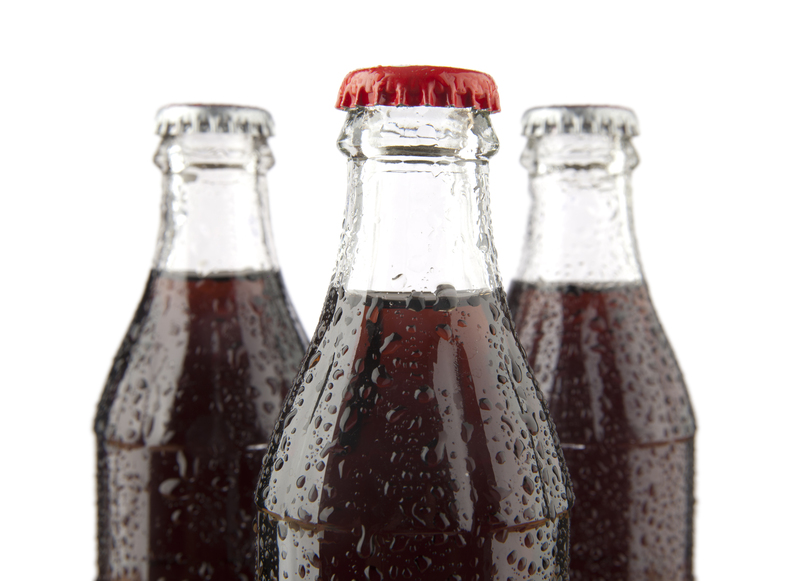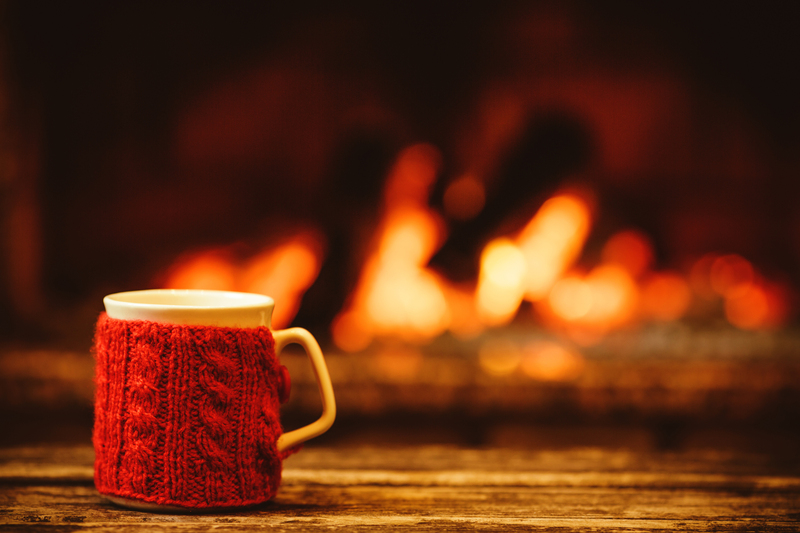Reclaim Your Stovetop's Shine by Removing Stubborn Burnt-on Residue
Posted on 24/05/2025
Reclaim Your Stovetop's Shine by Removing Stubborn Burnt-on Residue
Has your stovetop lost its sparkle, dulled by layers of burnt-on spills and stubborn grease? Reclaiming your stovetop's shine isn't just about aesthetics--it's essential for hygiene, safety, and the joy of cooking! In this comprehensive guide, we'll explore the most effective methods to clean browned residues, remove tough stains, and restore that gleaming surface.

Why Is Burnt-on Residue So Difficult to Remove?
Understanding the science behind those persistent stains will help you tackle the problem at its root. When food or liquids spill onto your stovetop, high temperatures rapidly cook off the moisture. What remains are stubborn, carbonized deposits tightly bound to your cooktop's surface--especially if you have an enamel-coating, glass, or stainless-steel surface. Over time, this burnt-on residue hardens, making regular cleaning methods insufficient.
- Burnt sugars create sticky, caramelized layers
- Oily spills become stubborn, greasy crusts
- Protein-based spills form tenacious black crusts when overheated
Start with Safety: Prepare Your Stovetop Before Cleaning
Never attempt to clean your cooktop while it is still hot! Turn off all burners and allow the entire surface to cool completely before starting. If you have an electric stovetop, unplug it if possible. For gas stoves, ensure all burners are fully off.
- Wear gloves and protective eyewear when using chemical cleaners or scrubbing pads
- Ventilate the area well
- Remove burner grates, knobs, and any detachable components
Tools and Materials You'll Need
- Soft microfiber cloths or cleaning rags
- Non-abrasive sponges or scrub brushes
- Baking soda
- White vinegar
- Lemon juice
- Dish soap
- Plastic scraper or old credit card
- Commercial cooktop cleaner (optional)
Step-by-Step Process: Remove Burnt-On Residue & Restore Shine
1. Remove Surface Debris
Start by wiping away loose crumbs and debris with a damp microfiber cloth. Remove burner grates and soak them in hot, soapy water while you clean the surface.
2. Soften Residue with Heat and Moisture
- Dampen a cloth with hot water and lay it over the stained areas for 10-15 minutes. This helps loosen the hardened residue for easier removal.
- Alternatively, boil a kettle of water and carefully pour a small amount over problem spots. Never do this on glass cooktops!
3. The Baking Soda & Vinegar Method
Baking soda is a mild abrasive, and white vinegar is a natural degreaser. Together, they form a powerhouse combination for removing tough burnt-on substances.
- Sprinkle baking soda evenly over the affected areas.
- Spray or drizzle white vinegar on top. Allow the mixture to fizz for 5-10 minutes.
- With a damp, non-abrasive sponge, scrub in gentle, circular motions.
- Repeat as needed for heavily stained spots.
Tip: For extra-stickiness, make a thick paste of baking soda and a few drops of water, and let it sit on severe stains overnight before scrubbing.
4. Scrape Gently for Stubborn Spots
For ultra-stubborn burnt-on food, use a plastic scraper or an old credit card. Gently work at the residue at a low angle--never use knives or metal objects, as these can scratch your cooktop.
5. Tackle Grease and Shine with Dish Soap
- Mix a few drops of dish soap in warm water.
- Dampen a cloth with the soapy solution and wipe down the entire stovetop.
- This step will lift any remaining greasy film and enhance the surface shine.
6. Commercial Cleaners: When to Use Them
If home remedies fail, consider a specialized cooktop cleaner designed for your surface type (glass, enamel, or stainless steel). Follow directions precisely. Resist the urge to use oven cleaner--these formulas are too harsh and can ruin some finishes.
7. Final Rinse & Buff Dry
- Rinse away any residue using a clean, damp cloth.
- Buff the stovetop dry with a soft microfiber towel for a gleaming finish.
- Polish metal and glass surfaces with a dry cloth to enhance the renewed shine.
Special Tips for Different Stovetop Types
Glass and Ceramic Cooktops
- Use only approved glass cooktop scrapers--never steel wool or abrasive pads.
- A razor blade held at a slight angle can safely remove stubborn residue (check manufacturer instructions first).
- Finish with a glass cooktop polish to restore clarity and shine.
Stainless Steel Stoves
- Follow the grain of the metal when scrubbing.
- A mix of vinegar and water helps remove streaks and spots.
- Use a stainless steel polish for a mirror-like shine.
Enamel-Coated Stovetops
- Enamel is durable but can chip with abrasive tools--limit use of scrapers.
- Clean with baking soda pastes and non-abrasive sponges.
- A diluted solution of lemon juice helps dissolve mineral deposits and odor.
How to Clean Stove Grates, Burners & Knobs
- Soak grates in hot, soapy water for 15-30 minutes.
- Scrub with a stiff nylon brush to lift off charred stains and remove greasy buildup.
- For tough spots, sprinkle baking soda and scrub with a damp sponge.
- Dry thoroughly before reassembling everything.
Burners
- For gas burners, avoid getting the igniter wet.
- Use a damp cloth to wipe away all residue and clean the holes with a toothpick if clogged.
Knobs
- Remove knobs and wash separately in soapy water.
- Dry completely to prevent moisture from damaging the control mechanism.
Pro Secrets for Preventing Burnt-on Residue
- Clean up spills as soon as they occur, especially sugary or starchy liquids, which harden fastest.
- After each use, wipe your stovetop with a damp cloth to prevent buildup before it starts.
- Use splatter guards and lids when cooking foods prone to boiling over or splashing oil.
- For ultimate protection, apply a thin coat of cooktop protectant after deep cleaning. This creates a barrier that minimizes future stains and makes daily cleaning a breeze.
Natural Alternatives for Eco-Friendly Cleaning
- Lemon juice and salt: Sprinkle salt over stains, squeeze fresh lemon juice, and let sit before scrubbing with a cloth for shiny, residue-free surfaces.
- White vinegar: Natural degreaser that brightens surfaces without leaving chemical residues.
- Cream of tartar: Mix with water to form a gentle, whitening scrub.
Common Mistakes That Cause Stubborn Build-up
- Using harsh abrasives or metal scrubbers--these scratch and dull your stovetop's finish.
- Letting spills sit for hours or days, making them tougher to remove.
- Neglecting to clean under burners and grates--out of sight doesn't mean out of mind!
- Forgetting to rinse cleaning products off, which can leave streaks or sticky residues.

Frequently Asked Questions
Can I use a magic eraser on my stovetop?
Magic Erasers are fine for ceramic and enamel tops (test first), but avoid on glass or stainless steel unless the manufacturer approves.
How often should I deep clean my stovetop?
For frequent cooks, aim for a deep clean every week and a thorough wipe-down after each use.
Is it safe to use bleach?
Bleach is NOT recommended on most cooktop surfaces, as it can corrode the finish and cause discoloration.
Summary: Maintain the Sparkle on Your Stovetop
Reviving your stovetop's shine is possible, even after months of grime and burnt-on residue have dulled its finish. By following these simple, effective methods and giving your stove a little attention after each use, you can keep your cooking space hygienic, beautiful, and welcoming.
- Act quickly on spills and boil-overs
- Use natural cleaners for gentle yet powerful results
- Avoid abrasive tools to preserve your stovetop's finish
- Deep clean regularly and apply a protectant for easy, ongoing sparkle
With these tips and a little elbow grease, you can reclaim your stovetop's shine, remove stubborn burnt-on residue, and cook with confidence!




